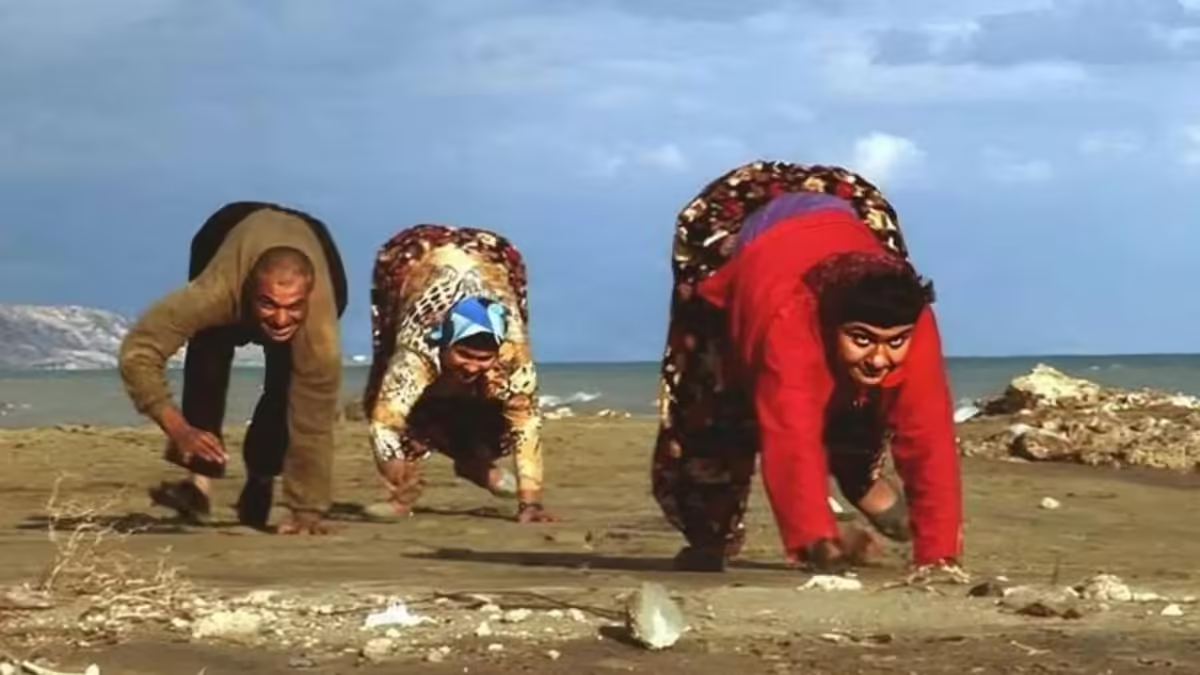Families often have unique traits, but the Ulas family from a remote village in Turkey stands out as an extraordinary anomaly in human evolution. This family’s unusual behavior—walking on all fours—has fascinated scientists for years, sparking debates about the origins of their quadrupedal movement.
The Ulas family first came to scientific attention in the early 2000s when a research paper described five siblings who moved using a bear crawl-like gait. This discovery baffled experts, with no consensus on the cause of this rare behavior. In a bid to understand more, evolutionary psychologist Professor Nicholas Humphrey of the London School of Economics (LSE) visited the family, delving deeper into their unique circumstances.
Out of 18 children born to the Ulas parents, six exhibited quadrupedalism, an exceedingly rare condition never observed in modern adult humans. Reflecting on the phenomenon, Professor Humphrey shared his astonishment with 60 Minutes Australia, which featured the family in a 2018 documentary. “I never expected that even under the most extraordinary scientific fantasy that modern human beings could return to an animal state,” he expressed.
Humphrey highlighted the distinctiveness of humans, particularly our ability to walk upright, a key characteristic that separates us from other species. “The thing which marks us off from the rest of the animal world is the fact that we’re the species which walks on two legs and holds our heads high in the air,” he stated. He emphasized that although language and other cognitive skills set us apart, upright walking is crucial to our sense of human identity. “These people cross that boundary,” he said, underlining the Ulas family’s departure from conventional human behavior.
The Ulas family was labeled by some as a “missing link between man and ape,” with scientists puzzled by their walking style. While some experts proposed a genetic mutation had “undone the last three million years of evolution,” others argued there was no specific “gene” responsible for upright walking, suggesting environmental or neurological factors could be involved.
Humphrey’s research revealed that the five living siblings, aged between 22 and 38, all suffer from a form of brain damage, particularly in the cerebellar vermis, a part of the brain responsible for motor control. However, he clarified that this alone could not explain their quadrupedalism, as other individuals with similar brain damage, or even without a cerebellum, can still walk upright.
Interestingly, the Ulas family’s form of walking differs from that of our closest primate relatives like chimpanzees and gorillas, who walk on their knuckles. The Turkish siblings use the palms of their hands, balancing on their wrists and lifting their fingers off the ground. This unique adaptation prevents damage to their fingers, unlike knuckle-walking primates. “What’s significant about that is that chimpanzees ruin their fingers walking like that,” Humphrey explained to BBC News in 2006. Remarkably, the Ulas siblings have maintained dexterity in their fingers, with the women engaging in fine motor tasks like crochet and embroidery.
Humphrey speculated that the Ulas family’s walking style might resemble how early human ancestors moved, keeping their fingers nimble for tool use—a critical skill in human evolution. “I think it’s possible that what we are seeing in this family is something that does correspond to a time when we didn’t walk like chimpanzees but was an important step between coming down from the trees and becoming fully bipedal,” he noted.
However, Humphrey also offered a more straightforward explanation for the family’s quadrupedalism: a lack of proper guidance and medical support. Growing up in a village with no access to local health services, the Ulas children were never encouraged to transition from crawling on all fours to walking upright. Humphrey recounted an experiment where he provided the siblings with a walking frame, leading to a remarkable transformation within hours. “The children who had never taken a step upright on two legs [used] this frame to walk across the room with such delight in their faces and a sense of achievement,” he recalled, describing it as if they had made an “astonishing breakthrough” into a new world.
This experience, he said, reignited his admiration for the human spirit. Humphrey reflected on how the siblings’ determination to overcome their challenges embodied resilience and the universal human drive to assert one’s identity and dignity. “It helped me see how human beings in the most disadvantaged circumstances can triumph over their adversity, no matter what they have to do to maintain their pride and the sense of themselves,” he concluded.
The Ulas family’s story continues to challenge scientific understanding, offering a rare glimpse into the complexities of human evolution and the enduring strength of the human spirit.





